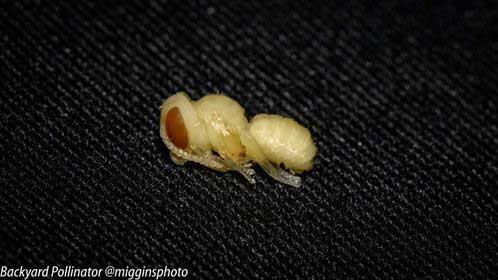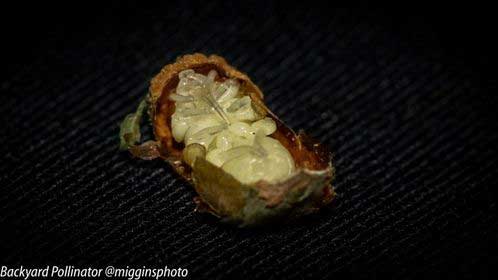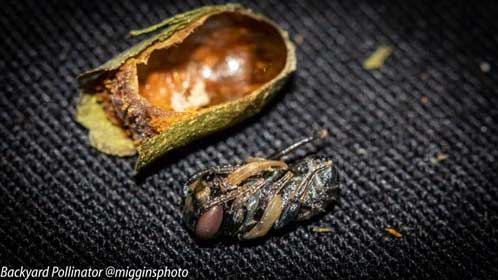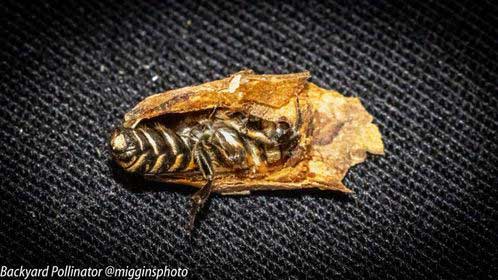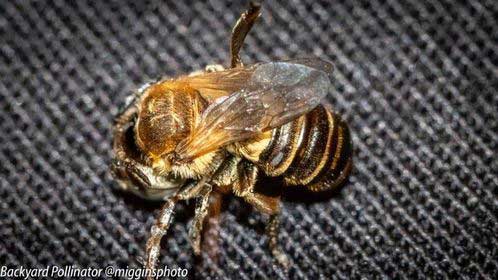When your Backyard Pollinator arrives, the leafcutter bees are dormant. What happens next?
Read this description of the 8 steps of the lifecycle of a leafcutter bee to find out more!
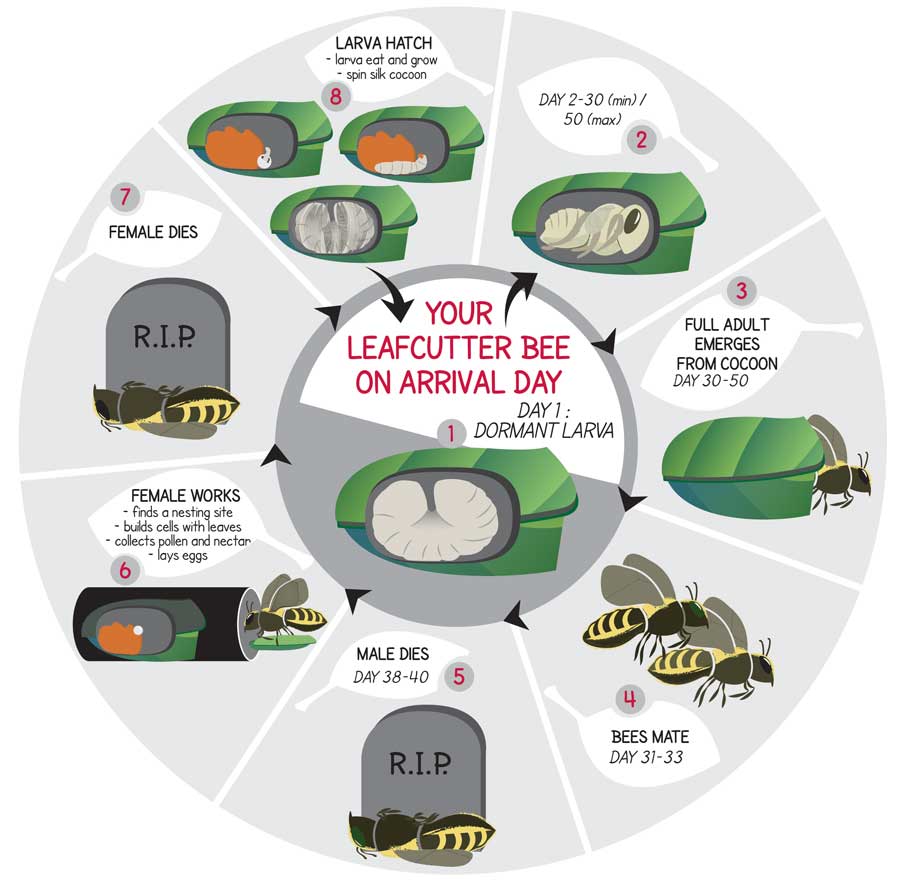
Illustration by The Watrous Manitou
1. In our warehouse the leafcutter bees are kept at a temperature between +1C and +15C. Within this temperature range the leafcutter bees are in sustained dormancy. The bees are in this state upon shipping and arrival to your doorstep.
2. Incubation and Metamorphosis:
- Incubation is initiated when the temperature of the Backyard Pollinator goes above +15C for a sustained period of time.
- Incubation can be done artificially by keeping the bees inside your home until adult bees emerge
- Incubation may also be done naturally by placing the bees outside when the minimum temperature is above freezing (0C) and daytime temperatures reach +20C.
- Metamorphosis is the change from larvae to adult bee. Briefly, the larvae will change shape, develop legs, a head, thorax and abdomen. Next the eyes will turn pink, then red and finally darken to black (female) or green (male).
- Once the eyes have darkened the body color deepens.
3. The bees finally reach maturity with fully developed wings, eyes, claws, antenna, hair, etc and are ready to emerge.
- Cutting their way out of their cocoon with their mandibles, the new adults emerge. At this stage they are ready to fly into the world to find food in the form of nectar and pollen. This food gives them enough energy to grow just a bit more. The new bees will find shelter in the empty holes of your Backyard Pollinator.
4. Leaf cutter bees mate soon after emergence. They join tail to tail and mating is complete.
5. A male leafcutter bee’s main purpose is to fertilize females. Once this task is complete they soon die.
6. Female bees live 5 to 8 weeks. In this time they collect food and leaf material to make cells. An egg is laid in each cell and she may create up to 20 cells with eggs. Females are only 33% of the population so you need three larvae to replace one female bee.
7. In a short time the females fly their wings off and die. The two generations only coexist for a short time.
8. The new egg hatches as a larva to find a large cache of pollen and nectar paste, which is the true start to a generation.
- The bee larvae eats the food paste and grows for approximately 20 days, eventually consuming all its food source.
- After a short time without food the larvae knows it is time to spin a silk cocoon inside the cell which now only contains a larvae.
- The silk cocoon is a marvel unto itself, being waterproof and semipermeable to gasses.

